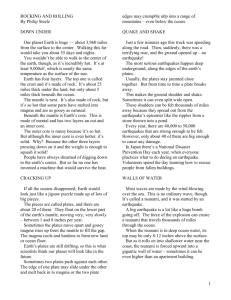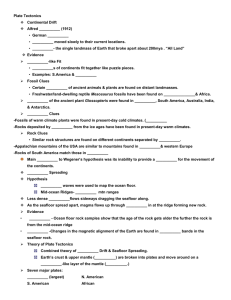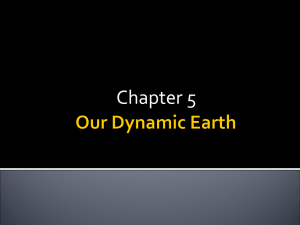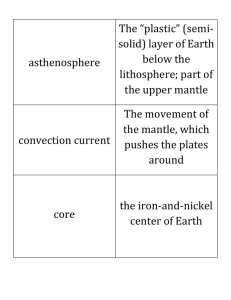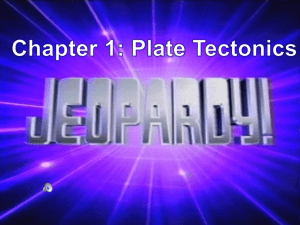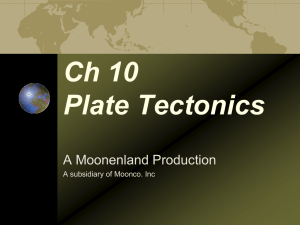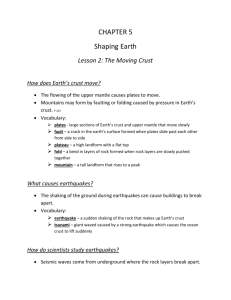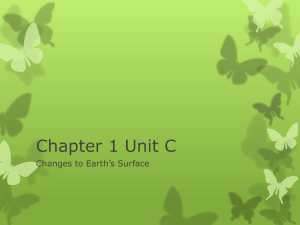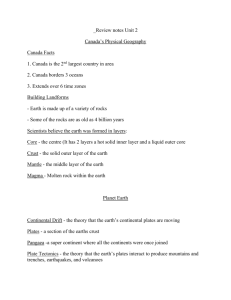How do Movements of the Crust Change Landforms?
advertisement
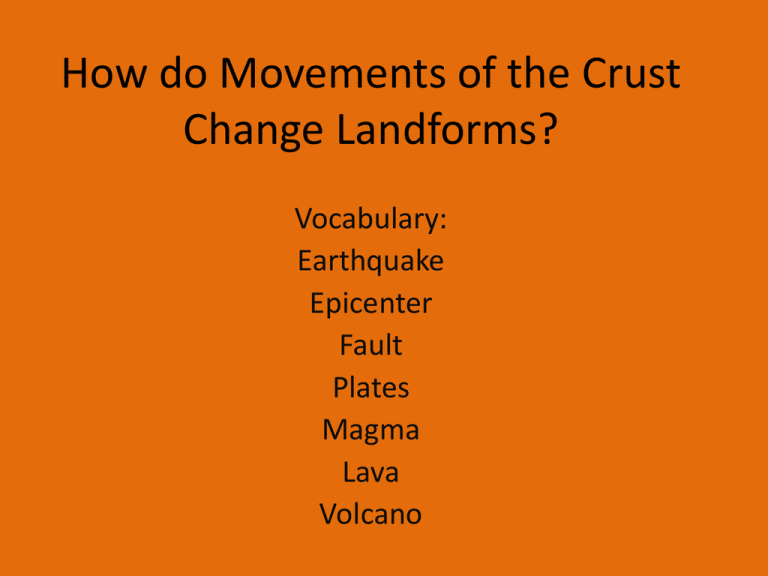
How do Movements of the Crust Change Landforms? Vocabulary: Earthquake Epicenter Fault Plates Magma Lava Volcano Earth’s Structure Earth has four layers. They are the crust, the mantle, the outer core, and the inner core. The crust is solid rock. The mantle is made up of solid and melted rock. The outer core is liquid iron. The inner core is solid metal. Earth’s crust and upper mantle are divided into pieces. Those pieces are called plates. The plates fit together like a puzzle. Plates move because they “float” on the softer rock of the mantle. Moving plates cause many changes in Earth’s surface. Earthquakes An earthquake happens when there is a sudden release of energy of Earth’s crust. That causes the ground to shake. The place in the crust where the energy is released is called the focus. The epicenter is the point of the Earth’s surface right above the focus. The worst damage is usually at the epicenter. Most earthquakes happen along a fault. A fault is a crack in Earth’s crust. Some faults are in the middle of a plate. Most are at the edges of plates. Volcanoes Melted, or molten, rock beneath Earth’s surface is known as magma. Magma may flow through an opening, or vent, in the crust. When magma reaches Earth’s surface, it is called lava. As lava flows from a vent, a volcano forms. A volcano made of lava, ash, or other materials. The materials come from eruptions. An eruption is anytime lava or other materials out of a vent. Sometimes there is a very hot column of magma called a hot spot. As a plate moves above it, the hot spot melts holes in the crust. The hot spot can form a chain of volcanoes. How Mountains Form When plates move, the can create mountains. Many mountains form where plates come together. One plate may be pushed up while the other plate is pushed down. Or both plates may be pushed up. Mountains can also form in the middle of a plate. Surrounding plates sometimes push on the plate between them. The pushing can cause rock in the middle of the plate to rise up. Then new mountains appear.
